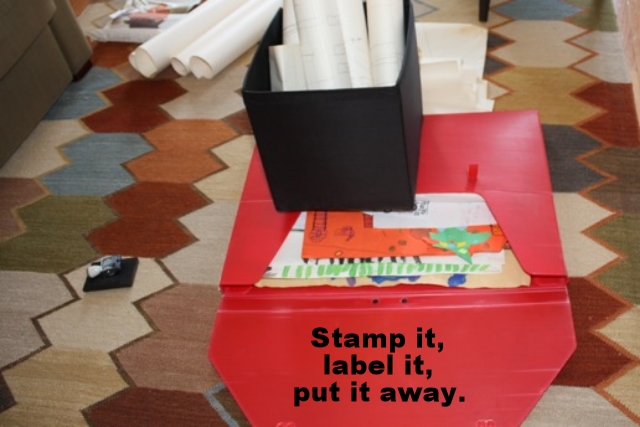Kids Make a Lot of Art: Here's How to Stay on Top of It
Parents today, we are a sentimental lot. It's difficult to throw away our children's art work. Those funny little drawings handed to us with dimpled hands all the way to the epic drawings of Elsa's castle in Frozen. Sometimes they are grand, other times they come to us in crumpled masses out of their backpacks at the end of the year.
I'm a little less sentimental than some. I can't help it. We live in New York City and do not have the space to hold volumes of work that my kids will likely not remember making when they are 22 and finally get their own apartment after college. Also, I'm very strict about maintaining our work spaces at home, so we always have a clear space to make new stuff.
At the end of the school year, I need to purge to make room for more art, homework, projects that will stream in next year.
Ideally, I would photograph the best stuff and toss or repurpose the paper. That’s the advice I give to clients and mom friends. But when I do art purging sessions with most moms, there is an incredible amount of resistance, every drawing is worthy of keeping. They fall into the memory lane vortex and I have to pull them back to reality and letting go, since that's what they hired me to do. Sometimes the "keep" pile is bigger than it should be, considering the small space they have to store long term. Long term, folks, is at least another 15 years perhaps even longer. Especially for moms of 2nd graders in a cramped New York City apartment, holding onto three Sterilite tubs of art for just one school year is simply not an option.
Timing is key. When should you go through it? Usually when your children are asleep or away. You can make them a part of the process, but 99% of the time, they will not understand why you want to throw their things away. By nature they are pure emotion and zero logic.
Sometimes I do mini purges, when the boys have been especially prolific. How do they react? Outrage if I've left a little evidence behind. The boys stage a protest. They dig through the trash and present evidence of my cruelty, “Why did you throw away my fake money?” “Why is that ruby clip I found at the bus stop in the kitchen trash?” Where are all my pennies?"
If I'm very careful, they don't ask at all. It seems mostly they don't notice. They are on to the next thing. And when I pull out the kindergarten artwork, the now 9 year old has very little reaction to most of it. He does note that he draws much better now. And I wonder why I kept so many.
I'd also like the point out that we, as parents, are part of how our kids reconstruct their childhood selves and memory. If we keep everything without the weeding process they will have a lot of mediocre work to shrug at when we hand them their box(es) of childhood memorabilia some day in the future. So make an effort to save the best work and only the best.
This brings me to another important point: is the art hoarding for them or for us? Are we, as we really take the time to look at their work the past year, so saddened by the passage of time that our feelings cause us to behave irrationally? By irrationally, I mean wanting to keep in volumes that exceed the storage space we have.
I've outlined my own archiving project below with some basic, unedited photos just to show the flow of work. This was done last summer while the kids were camping with their dad. It took me one full day.
Before you do anything at all with the art, locate a long term storage space in your home. A closet without any damp or heat would be best. In attics or basements you can get a lot of temperature and moisture fluctuations and that's not good for storing anything made of paper like art or photos. Make sure this isn't just a short term solution, you don't want to put this in a storage area where it gets in the way of other things you want to access on a regular basis.
Step one
Pre-sorting and establishing a standard.
Look through the whole stack quickly and pick out your favorite 3. These are the standard, the level of effort and materials or simply the work that speaks to you the most.
Step two
Mark two post its yes and no for separate piles. You will want the yes pile to be smaller than the no pile. Now look through the stack again with the 3 favorites visible beside you. Anything that doesn't reach the same level as the three you chose in Step 1 goes in the no pile. If you have more than one child be sure and label the art and if you have a date stamper, stamp away. With very small children, it's nice to have to let them tell you what their drawing is about and write their answers on the back of the art. This small act goes a long way in enjoying the art later.
Step three
Buy these and label them with the child's name. Buy several if you keep a lot and plan to continue keeping large amounts. If you want to get really fancy, buy these or these and you will be on the level of archivist at a conservancy or museum.














